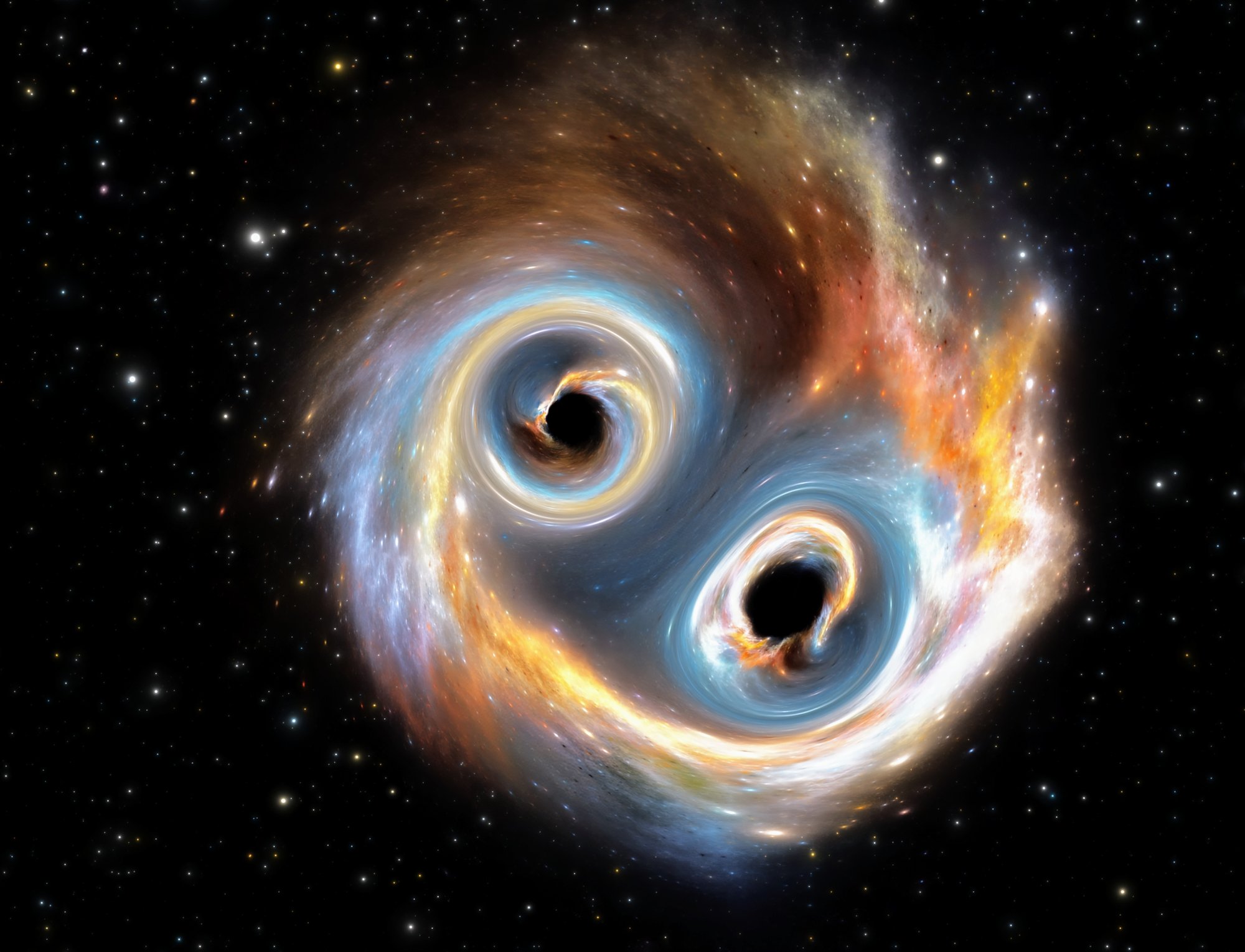A groundbreaking discovery suggests that dark matter particles play a crucial role in the merging of supermassive black holes (SMBHs), potentially resolving the long-standing "final parsec problem" in astronomy. This finding, published in the journal *Physical Review Letters*, unveils a previously overlooked behavior of dark matter that facilitates the coalescence of SMBH pairs into single, larger black holes.
The "final parsec problem" arose from the observation of a ubiquitous "hum" of gravitational waves across the universe in 2023. Scientists hypothesized that this background signal stemmed from millions of merging SMBH pairs, each dwarfing our Sun by billions of times in mass. However, theoretical simulations revealed a curious stall in the approach of these colossal objects when they were approximately a parsec apart (about three light years), effectively preventing them from merging.
This discrepancy contradicted the theory that merging SMBHs were the source of the gravitational wave background and the prevailing model of SMBH growth through mergers of smaller black holes.
Led by Professor James Cline of McGill University and CERN, along with Gonzalo Alonso-Ãlvarez from the University of Toronto and McGill, a team of researchers developed a new model that sheds light on the crucial role of dark matter in overcoming this impasse.
The researchers posit that dark matter particles interact with each other in a specific way that prevents their dispersal. This interaction maintains the density of the dark matter halo surrounding the SMBHs, allowing the black holes to continue their inward spiral and eventually merge.
Previous models assumed that the dark matter halo would be disrupted by the approaching SMBHs, halting their energy drain and ultimately preventing a merger. However, the new findings challenge this notion, revealing that the interplay between dark matter particles maintains the halo's density, enabling the SMBHs to overcome the final parsec obstacle.
"Our calculations explain how that can occur, in contrast to what was previously thought," explained Alonso-Ãlvarez, highlighting the significance of their discovery in bridging the gap between theoretical predictions and observed phenomena.
This research not only resolves the "final parsec problem" but also offers valuable insights into the nature of dark matter, a mysterious substance that constitutes the majority of the universe's mass but remains elusive to direct detection.
"Our work is a new way to help us understand the particle nature of dark matter," emphasized Alonso-Ãlvarez.
The team discovered that the evolution of black hole orbits is highly sensitive to the microphysics of dark matter, suggesting that observations of supermassive black hole mergers can be utilized to glean crucial information about these enigmatic particles.
Furthermore, the model's explanation of the interaction between dark matter particles also provides a compelling explanation for the shapes of galactic dark matter halos. The researchers found that the "final parsec problem" can only be solved if dark matter particles interact at a rate that alters the distribution of dark matter on galactic scales.
This groundbreaking research bridges the gap between vastly different physical scales, offering a novel perspective on the interplay between dark matter and cosmic structures. The discovery provides a significant leap forward in unraveling the complexities of dark matter interactions and their profound impact on the cosmos.
This study opens up a new avenue of research, paving the way for a deeper understanding of the universe's enigmatic dark matter and its role in the grand cosmic dance of black holes.
Article
Technology

Dark Matter's Hidden Hand: Solving the 'Final Parsec Problem'

